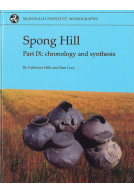Google Books previews are unavailable because you have chosen to turn off third party cookies for enhanced content. Visit our cookies page to review your cookie settings.
Falerii Novi (Hardback)
The Ground-Penetrating Radar survey of the Roman town
Imprint: McDonald Institute for Archaeological Research
Pages: 176
ISBN: 9781913344245
Published: 31st March 2025
Script Academic & Professional
Pages: 176
ISBN: 9781913344245
Published: 31st March 2025
Script Academic & Professional
You'll be £50.00 closer to your next £10.00 credit when you purchase Falerii Novi. What's this?
+£4.99 UK Delivery or free UK delivery if order is over £40
(click here for international delivery rates)
Need a currency converter? Check XE.com for live rates
(click here for international delivery rates)
Need a currency converter? Check XE.com for live rates
The Roman town of Falerii Novi was founded after Rome defeated the Faliscans in 241BC, and features widely in modern discussions of Roman expansion in Italy, with its town walls and defences often illustrated in accounts of architecture. Its site is now largely farmland, with the only buildings within the Roman walls being a Medieval church and associated structures, now used as a farm. The site attracted attention of 19th century antiquarians and was explored in limited excavations during the later 20th century, but its history and development remains only partially understood. In the late 1990s it was the subject of one of the first large-scale geophysical surveys completed in Italy using magnetometry. The publication of that work in 2000 formed the basis for an historical and archaeological interpretation that has subsequently been widely debated. The present volume results from a second innovative large-scale survey which deployed Ground-Penetrating Radar. This book presents the spectacular results of that work combined with evidence from the earlier magnetometry and integrated with information from excavation and past finds. The resulting account provides a full and new discussion of the town and its topographical and historical development, placed in the broader setting of Roman Italy. It includes a new interpretation of the early history of the town, discussions of the evidence of the major buildings as well as a series of accounts of spatial patterning within the city. As well as providing the first comprehensive synthesis of this important Roman town, the book shows how evidence from geophysical surveys can form the basis for new approaches to the understanding of Roman urbanism.
Other titles in McDonald Institute for Archaeological Research...















